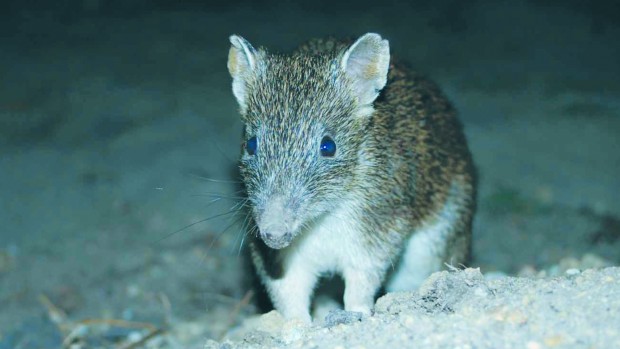
THE state government has removed habitat corridors from its plans to protect the iconic southern brown bandicoot in the southeast.
Conservationists were told about the backflip two weeks ago at a meeting with Department of Environment and Primary Industries (DEPI) officers.
It is understood a proposal to create two habitat corridors, or biolinks, centred on the Royal Botanic Gardens at Cranbourne has been dumped from the final version of the Sub-Regional Species Strategy for the Southern Brown Bandicoot, issued as a draft for public comment in late 2011.
One biolink was meant to run from the botanic gardens south to Western Port’s Quail Island, where there is a viable population of more than 1000 bandicoots after fox and cat removal in recent years.
The second was to connect the botanic gardens with Koo Wee Rup swamp and surrounds, where “tens of thousands of bandicoots live near drains, waterways, railway line reserves and on private properties”, according to wildlife expert Mal Legg.
The government’s move has disappointed the Southern Brown Bandicoot Regional Recovery Group and other conservationists in the region, and led to speculation that housing estate developers have put pressure on the government.
It also inspired the creation last week of an online petition addressed to federal Environment Minister Greg Hunt, who receives an email from every person who signs.
The petition, which had 400 signatures late last week, was created by Friends of the Southern Brown Bandicoot member Sarah Maclagan, an environmental sciences PhD student at Deakin University.
Ms Maclagan has been studying the region’s bandicoots for several years and is co-chair of the bandicoot recovery group along with veteran scientist David Nicholls.
The petition – “Don’t strand the bandicoot; put the corridors back!” – states that the recent expansion of Melbourne’s Urban Growth Boundary (UGB) “threatens to surround the crucial southern brown bandicoot population at the Royal Botanic Gardens at Cranbourne and cut connectivity with other populations nearby”.
Ms Maclagan said the government’s strategy was meant to protect sustainable bandicoot populations “within and adjacent to growth areas, with connectivity between populations” as well as “protect and enhance all populations, including at Royal Botanic Gardens Cranbourne”.
“We’re very disappointed corridors have been removed from the final document,” she told The Times.
“Without corridors, connectivity between bandicoot sub-populations will be severed by an impenetrable barrier of urban development.
“The chance of local extinctions of this endangered native mammal become much higher.”
She said the petition to Mr Hunt was “our one and only opportunity to provide corridors. Once development has occurred, there will be no going back”.
State government plans to expand the UGB triggered the federal Environment Protection and Biodiversity Conservation Act, Ms Maclagan said.
“Mr Hunt has to sign off on the state government changes and that’s why we are asking him to force the government to reinstate habitat corridors”, including those planned for the Botanic Ridge subdivision near the Cranbourne botanic gardens.
Ms Maclagan said DEPI officers questioned the use of biolinks “but we have evidence they do work”.
It was disappointing DEPI was focused on so-called “managed translocations” – capturing animals and moving them to other locations, she said.
“For example, the translocation of the threatened eastern barred bandicoot to French Island was a total failure,” she said.
“All that bandicoots need to survive and thrive is viable habitat protected from dogs, foxes and other predators.”
She said bandicoot were prolific breeders. “The young spend just 12 days gestating and are self-sufficient after two months. Females have between two and five babies in each litter.”
Ms Maclagan questioned the state government’s habitat protection fee. “The 2011 document stated developers would be charged $6000 to $8000 per hectare to fund the bandicoot protection strategy. This has been reduced to just over $4000 for a hectare that is worth more than $800,000 to developers; that’s half of one per cent.”
- The bandicoot petition for Greg Hunt is at: http://chn.ge/1mhaxB8